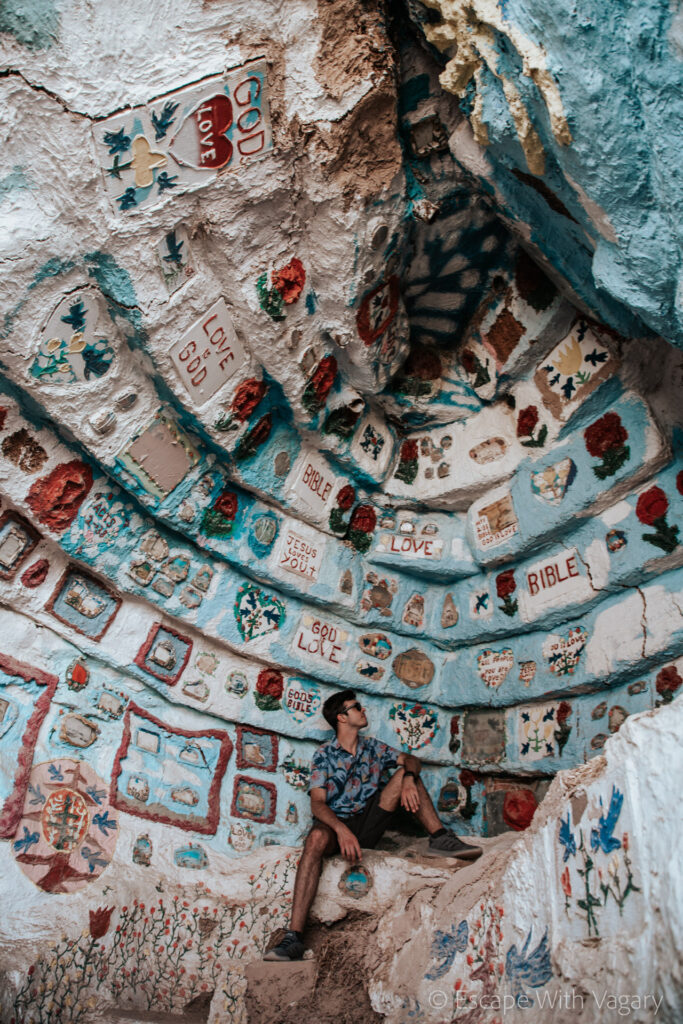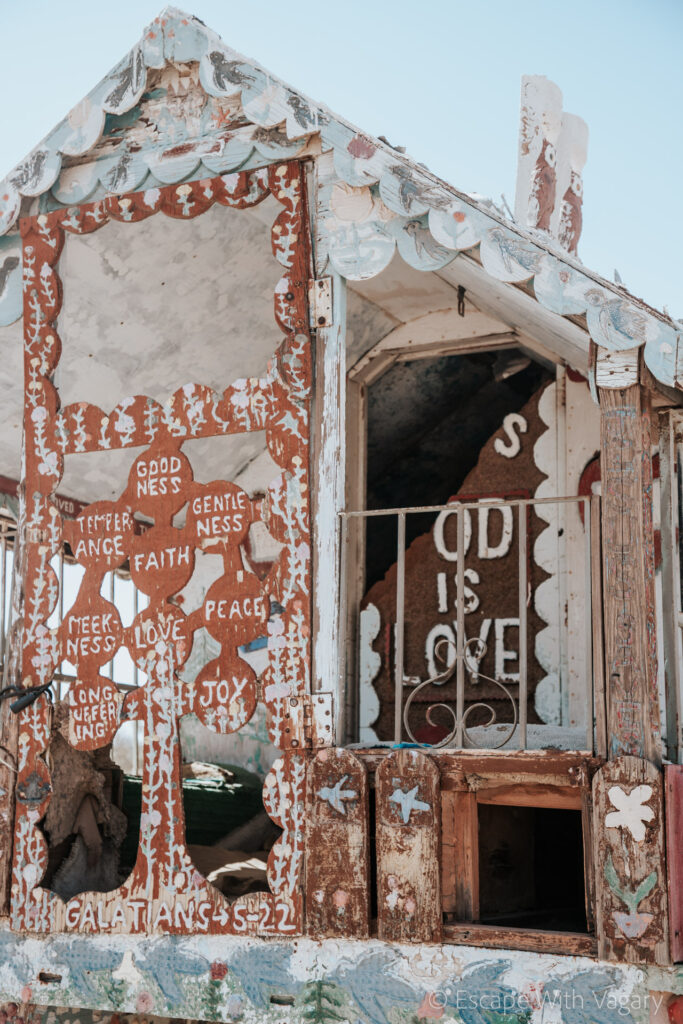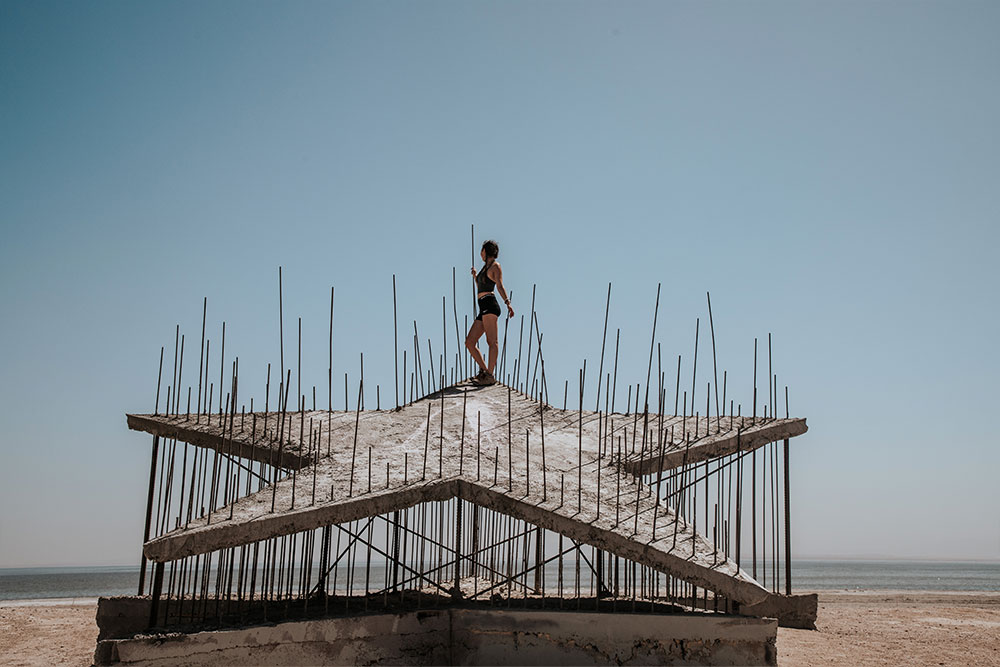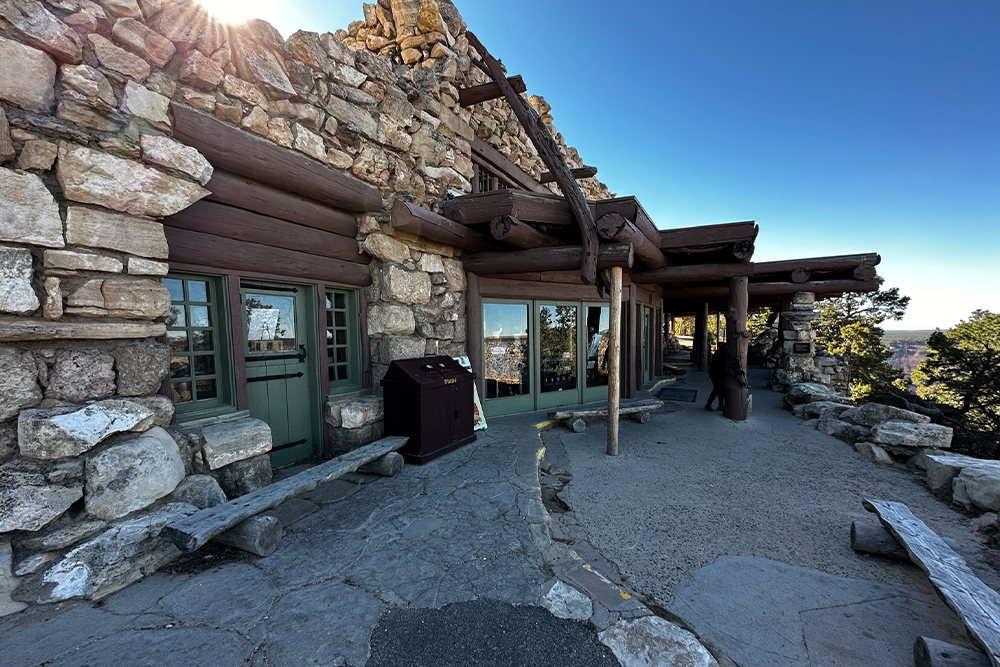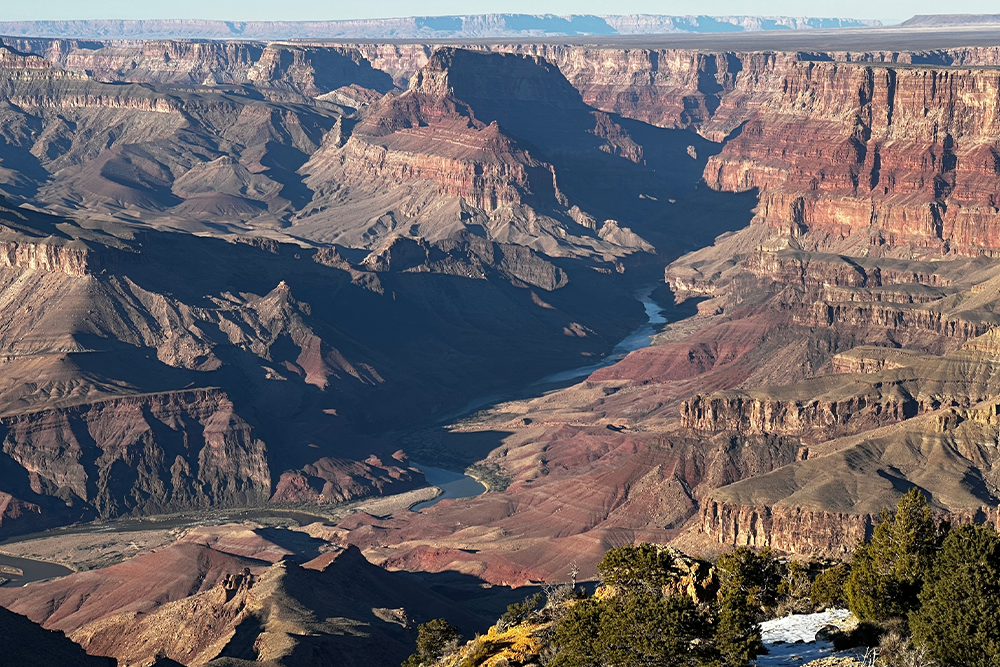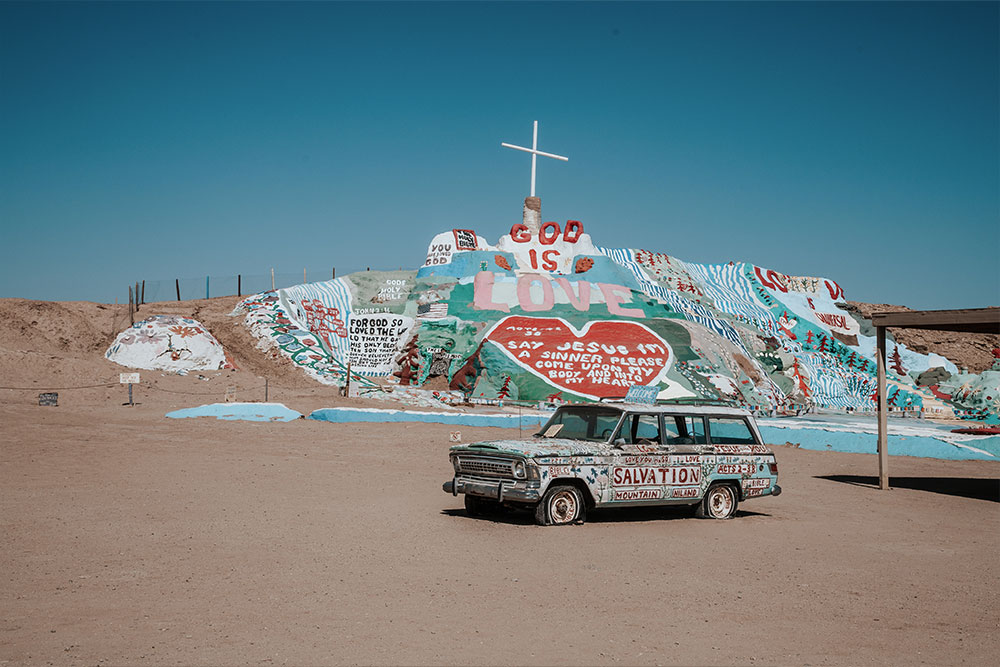
Salvation Mountain’s Radiant, Faithful Monument
By Lauren Wong
Nestled in Imperial County in the lower desert of Southern California stands Leonard Knight’s Salvation Mountain. Just east of the Salton Sea, you’ll find this sudden pop of color against the arid desert that reads “God Is Love.”
A native of Vermont, Knight was a welder, handyman, guitar teacher, and painter before he decided to relocate to Slab City. When he arrived in the early 1980s he brought his truck, an old tractor, and a hot-air balloon.
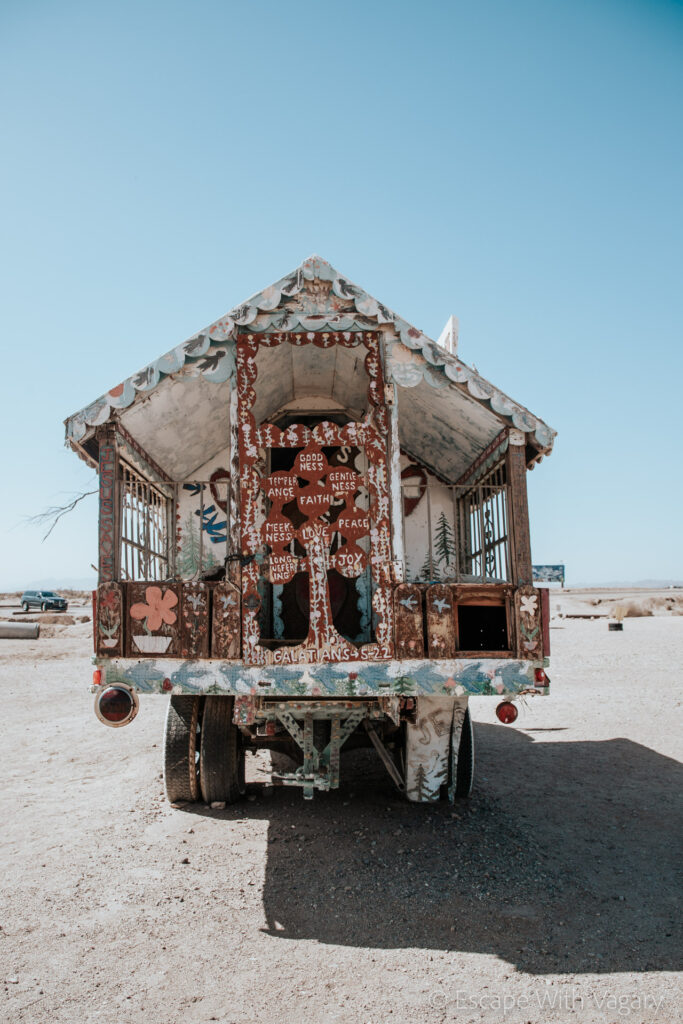
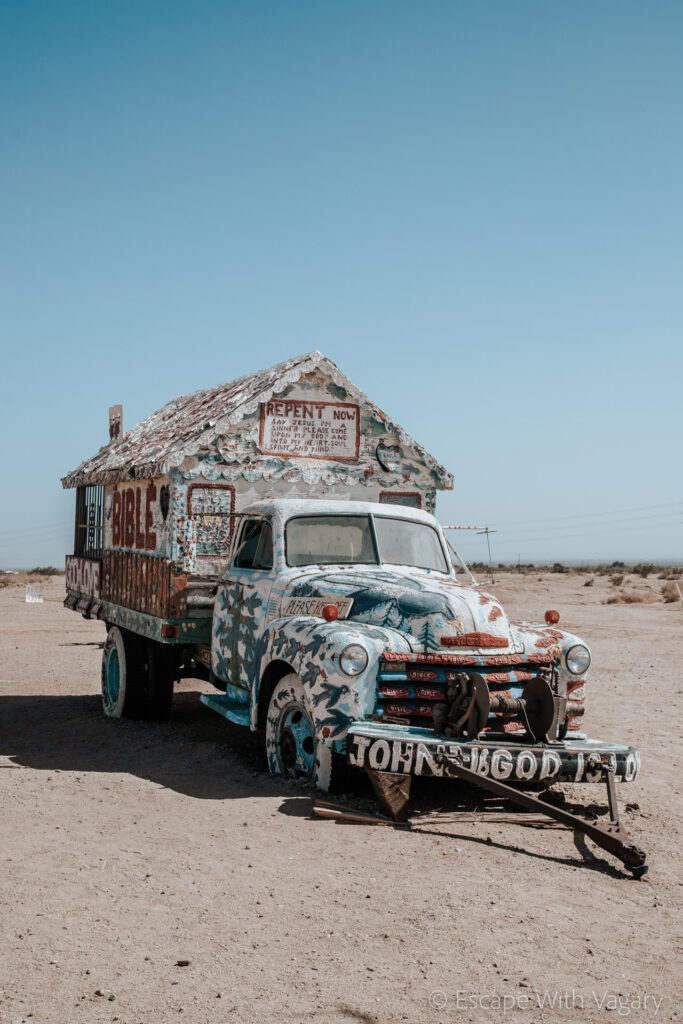
He says it was in 1967 when his sister made him join her at church that his whole life changed. He was never religious, and he ended up dipping out of the church. However, this left him with guilt and as he sat in his truck he kept repeating to himself “I am a sinner, Jesus come into my heart,” and something in him clicked.
The initial plan was to paint the sinner’s prayer on a hot air balloon, so he created one out of patchwork materials and used a stove to fill the balloon with hot air. Unfortunately, this didn’t work out and he couldn’t get his balloon to fly. Moving on to plan B, he decided that instead he’d create a little monument in the desert to portray his faith.
Made of adobe bricks, tires, old windows and automobile parts, he constructed this 50 foot tall, 150 foot wide mountain. For decades he used this mountain as his canvas, painting religious messages, including the scripture John 3:16, as well as the beauties found in nature around us.
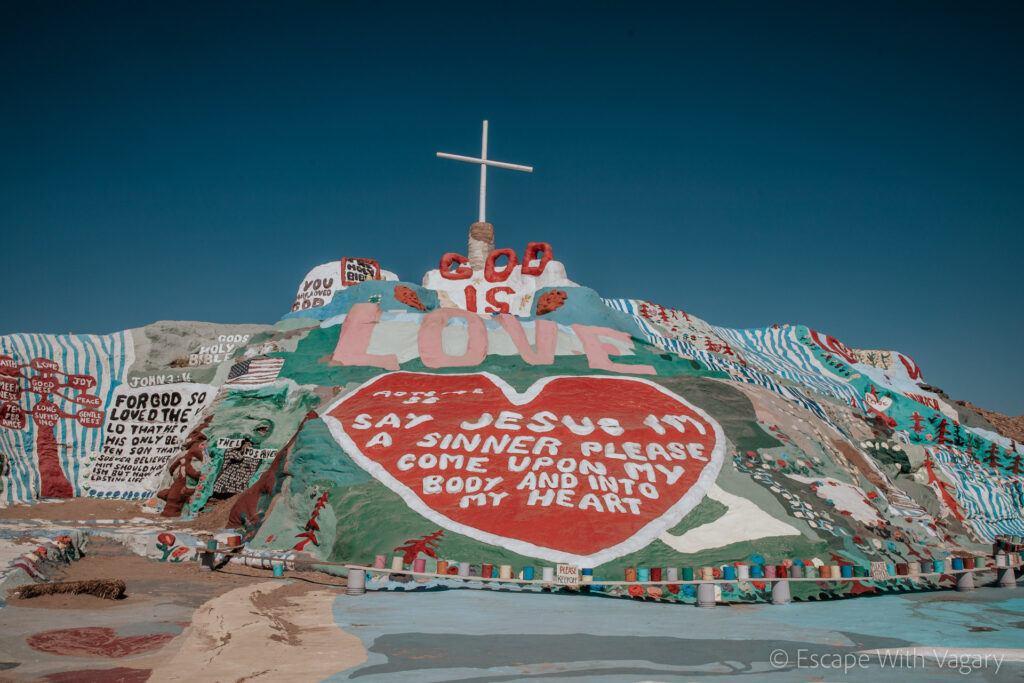
Scenes of the Sea of Galilee can be seen at the base of the mountain. There’s big blue and white stripes falling vertically down the mountain, decorated with flowers, trees, and birds, all in a colorful array. A massive red heart stands out from the center of the mountain under the cross that reads, “Say Jesus I’m a sinner please come upon my body and into my heart.” You can normally walk up the mountain along a painted yellow brick road, but unfortunately while I was there it was closed off.
It’s said that over 100,000 gallons of paint went into this vibrant, colorful masterpiece Knight left for us. The Folk Art Society of America declared Salvation Mountain a folk site that’s worthy of preservation and protection. When he passed away in 2014 at the age of 82, he didn’t have to worry whether or not his art would be maintained and cherished for years to come.
In 2011, a public charity, Salvation Mountain Inc., was created to maintain the site. Volunteers work to keep it as bright and exquisite as it always was.
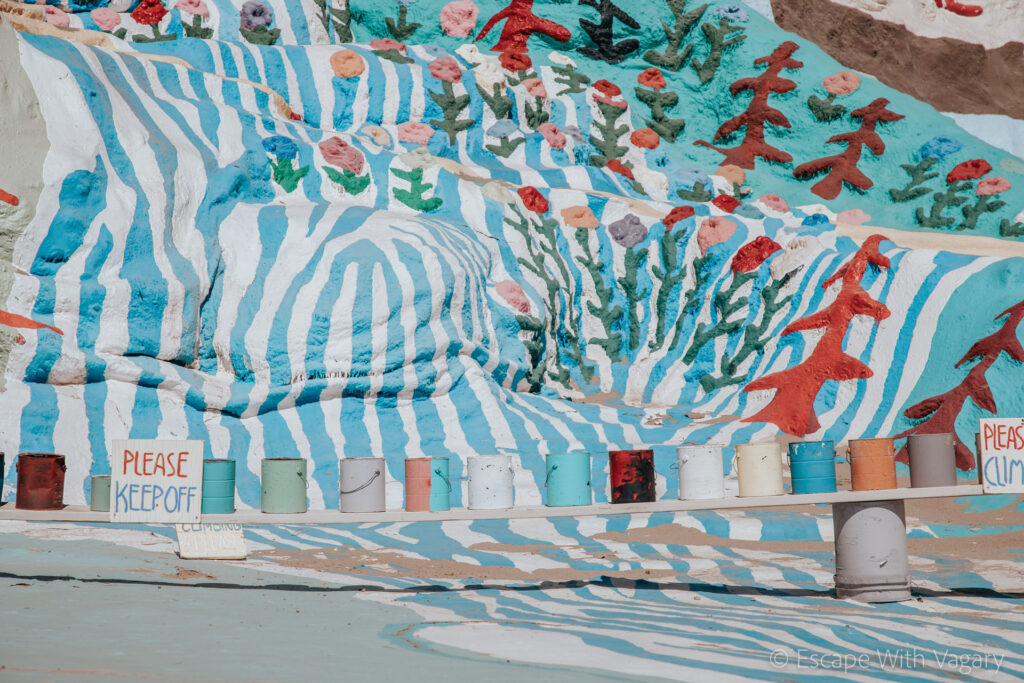
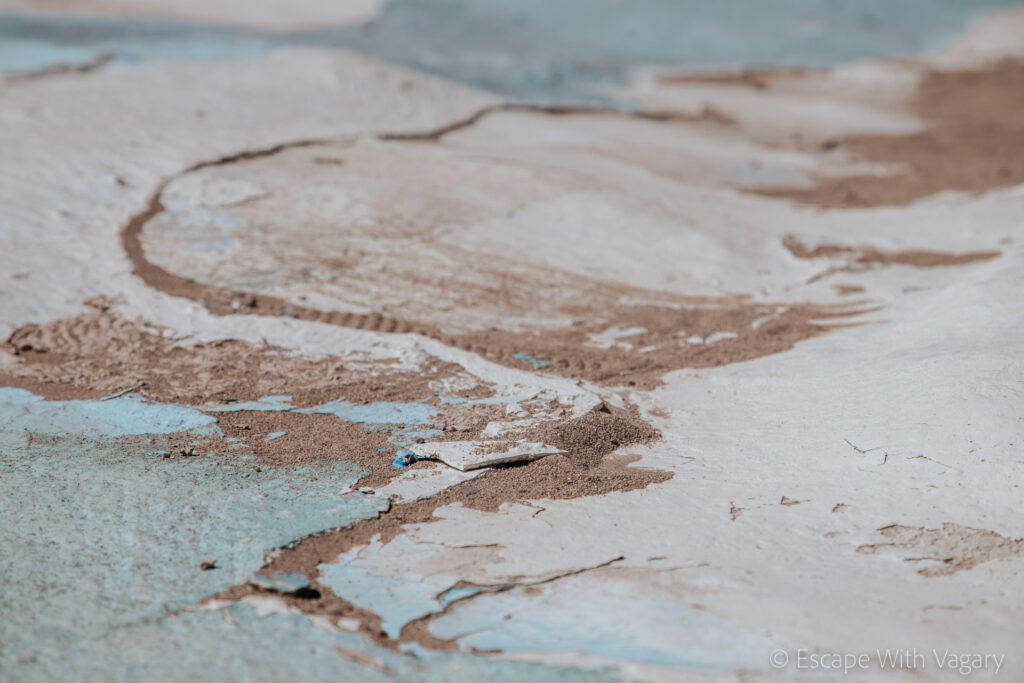
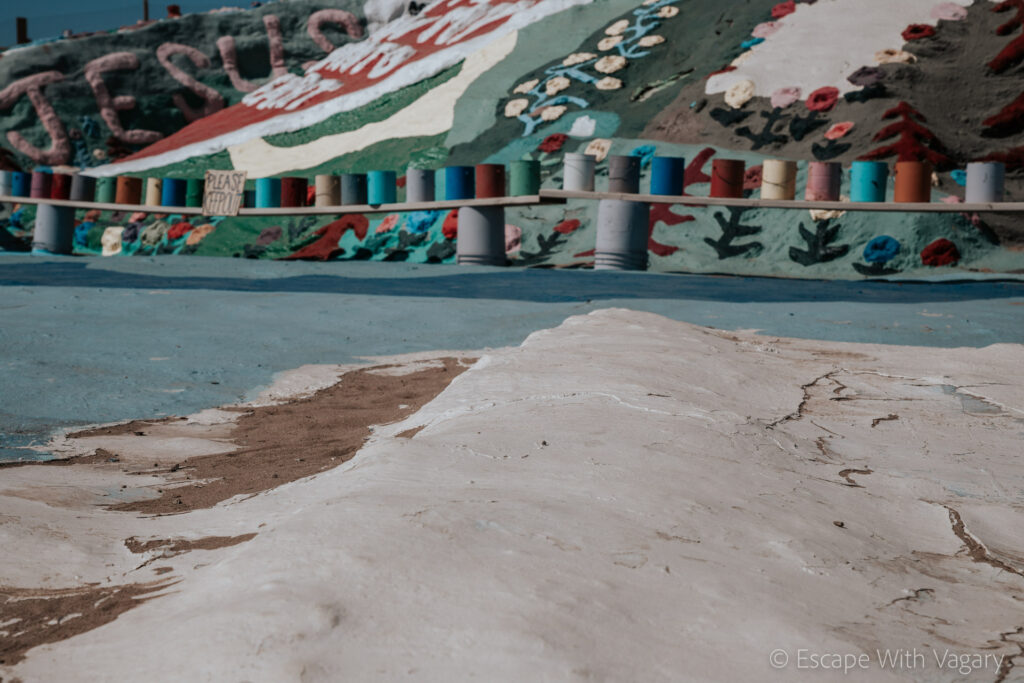
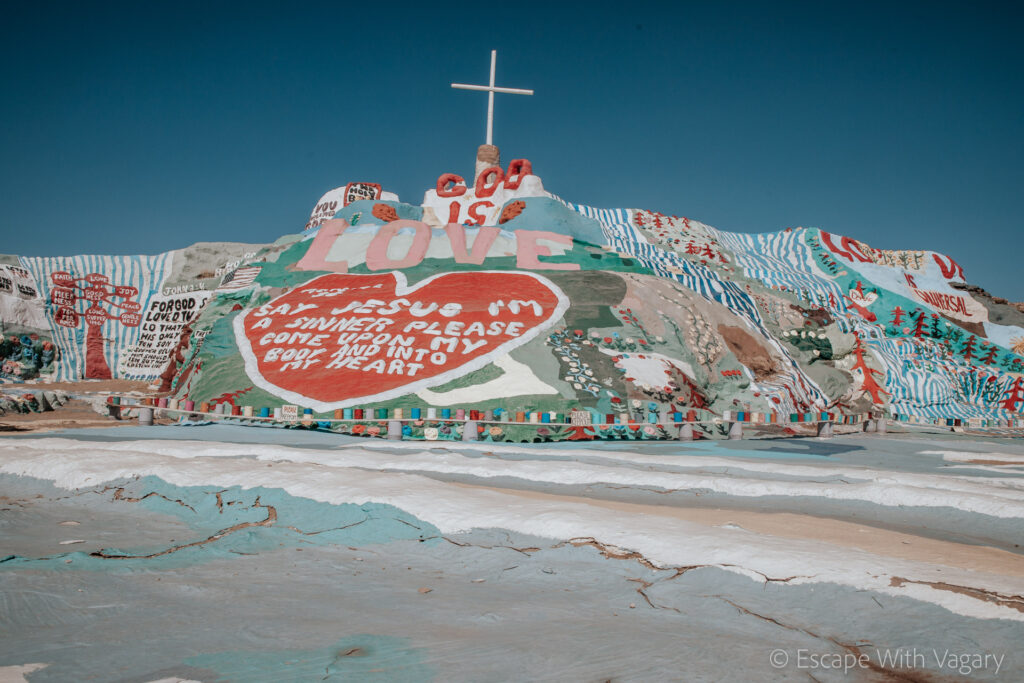
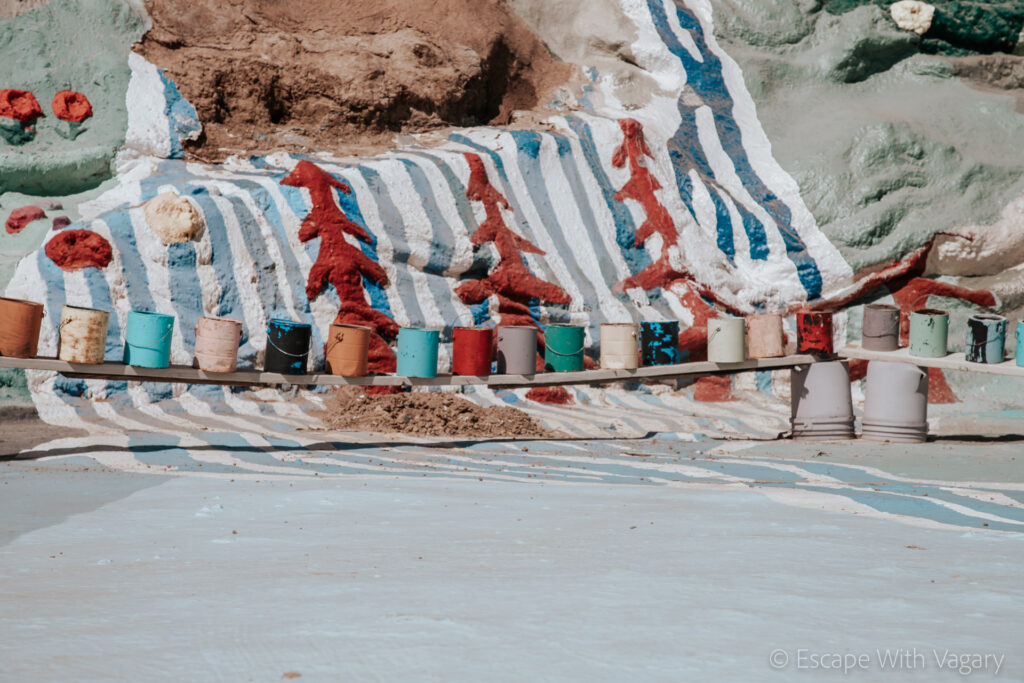
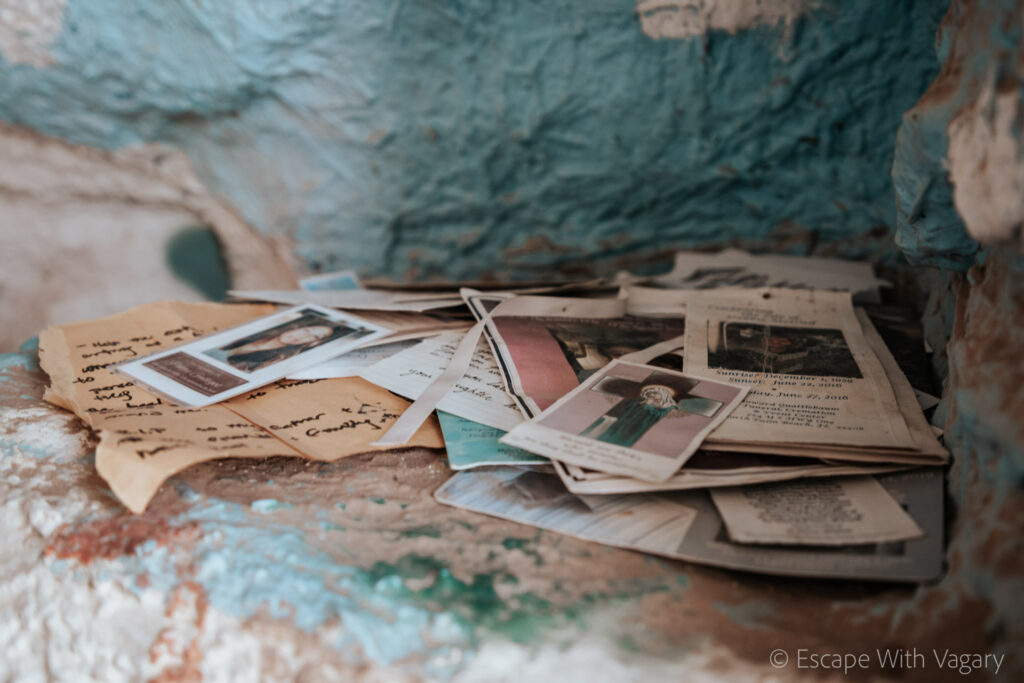
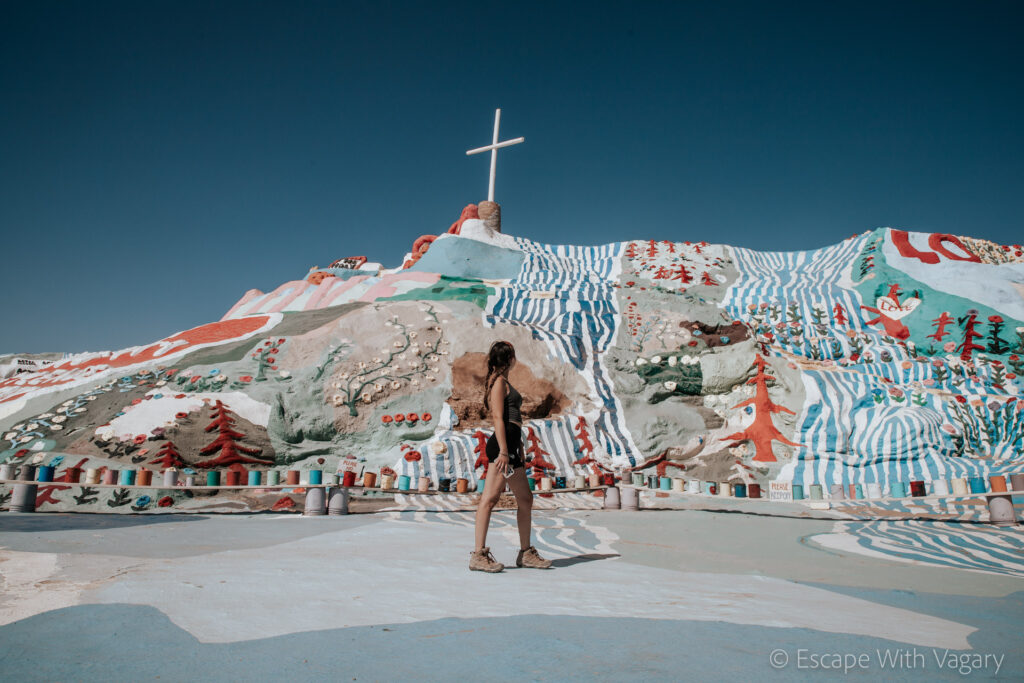
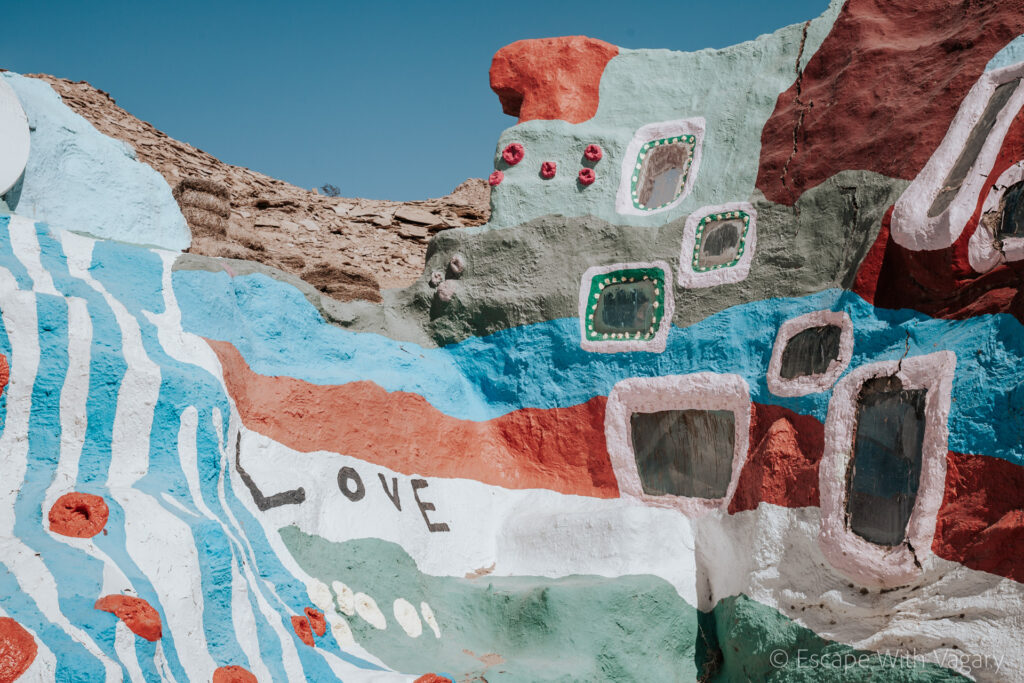


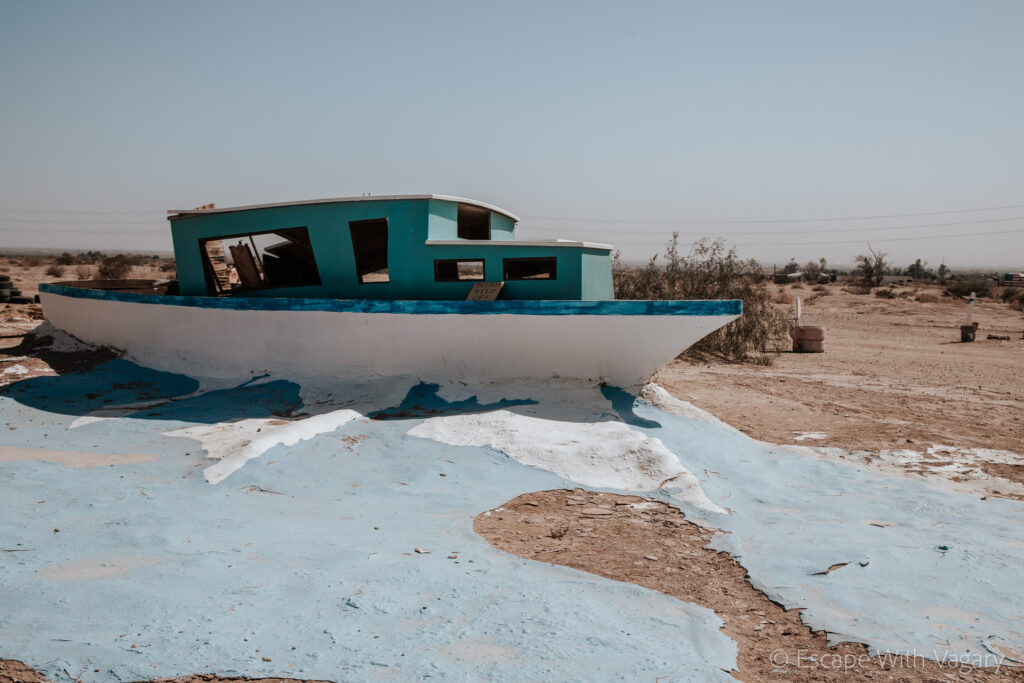

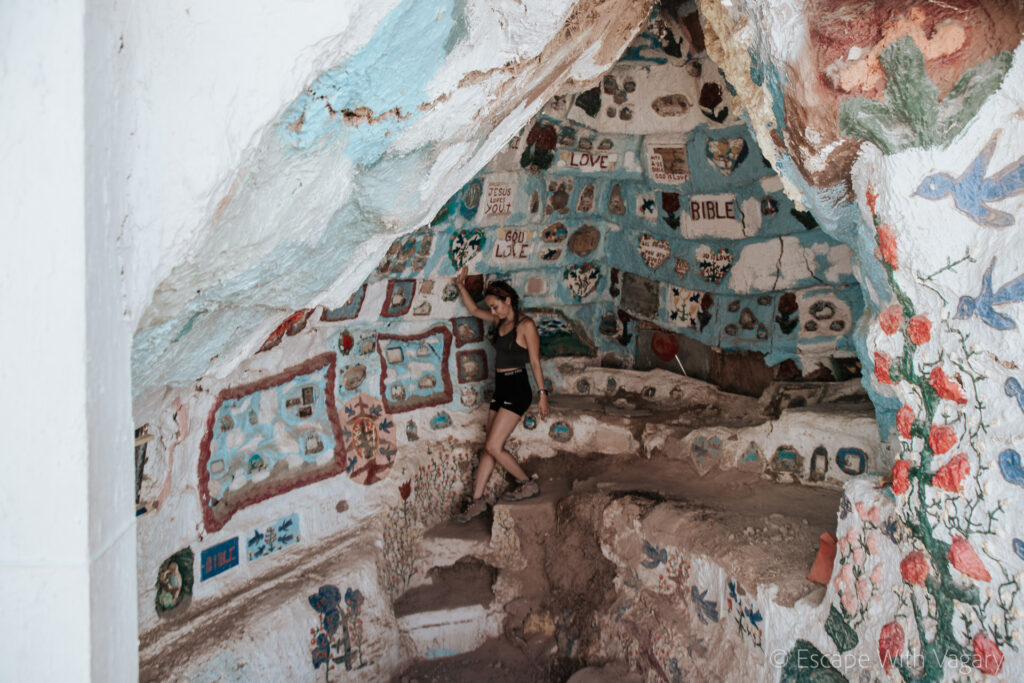
When you visit Salvation Mountain, what you’re seeing is actually not the original construction. In 1984 when he first started out, a rainstorm cracked his foundation and the mountain collapsed. Most of us would be distraught that something we’d put so much time and effort into had turned into shambles, but instead, he looked at it as a sign. A sign that God was telling him his construction wasn’t safe and to simply start over.
The Salvation Mountain standing now is the depiction of a man full of hope, love, and determination. He focused on using better materials, adobe mixed with straw, and focused on how to best engineer his devotional work of art.
His plan of constructing a “small” monument turned into something bigger over the years. In 1998 he decided to expand and created the hogan. With the Navajos settling in the surrounding area, he gained inspiration from their pueblitos to create this dome-like structure in which he called “The Museum.”
Although this created a perfect living space, he always preferred to live in the back of his truck. For 27 years this was his home.
What started out as a passion for spreading his new-found love of God turned into a media frenzy. His work has gotten coverage in Ripley’s Believe It Or Not, National Geographic, The Discovery Channel, and plenty of other news outlets.
I’d say his goal of spreading the word of God and his teachings was an enormous success.



